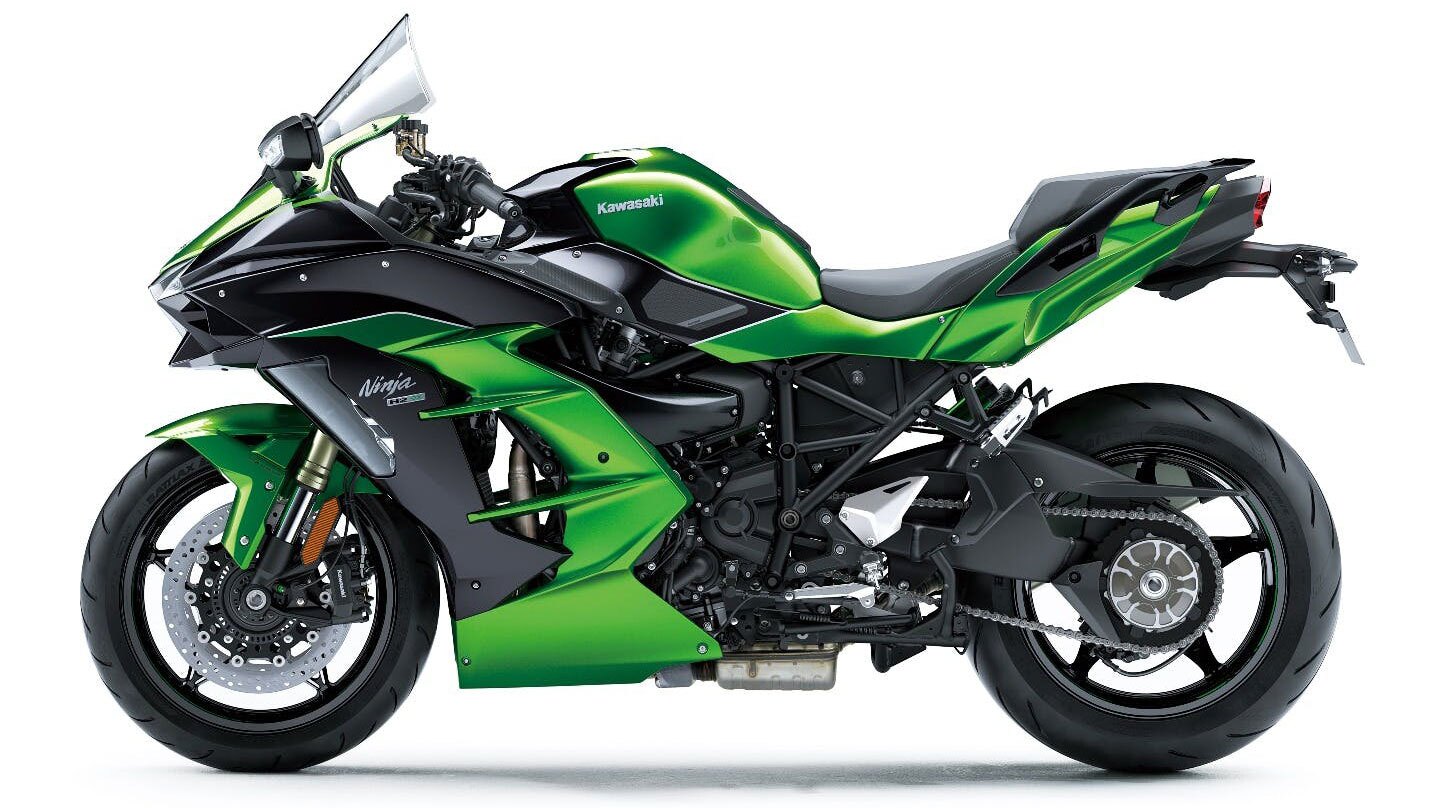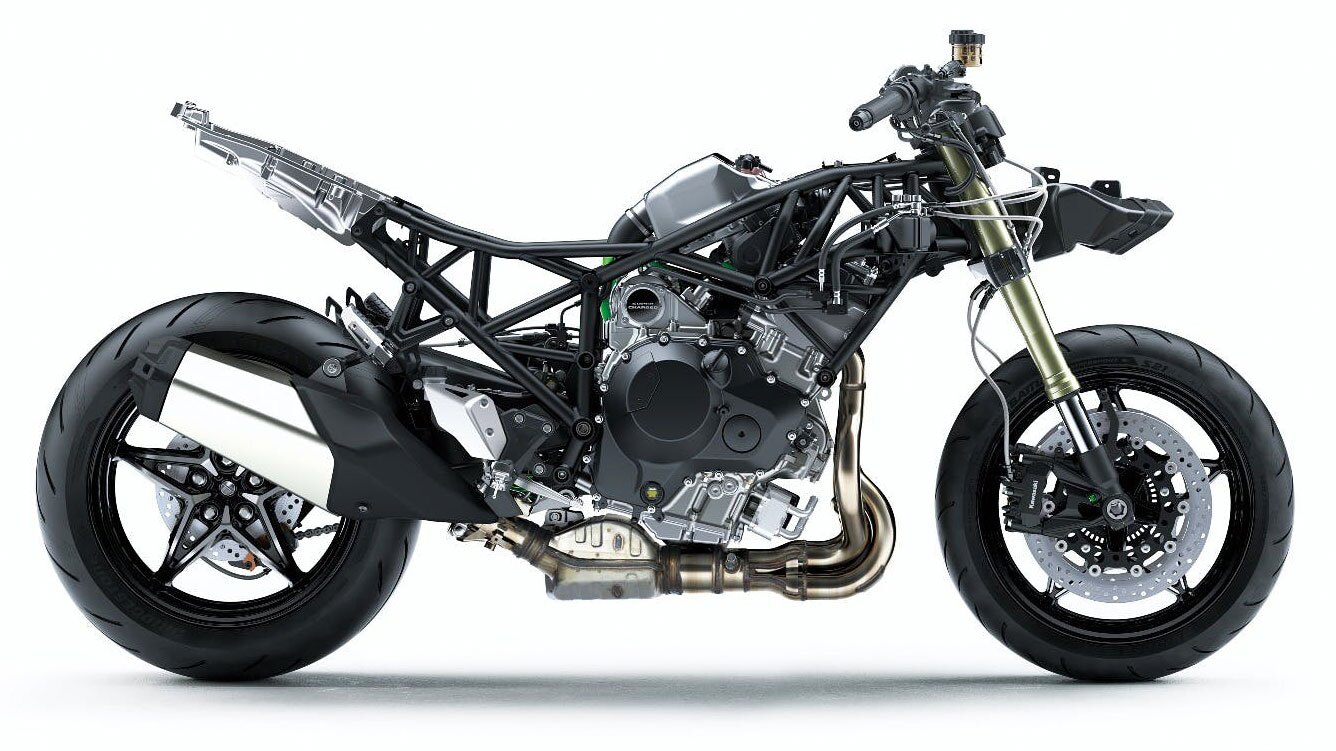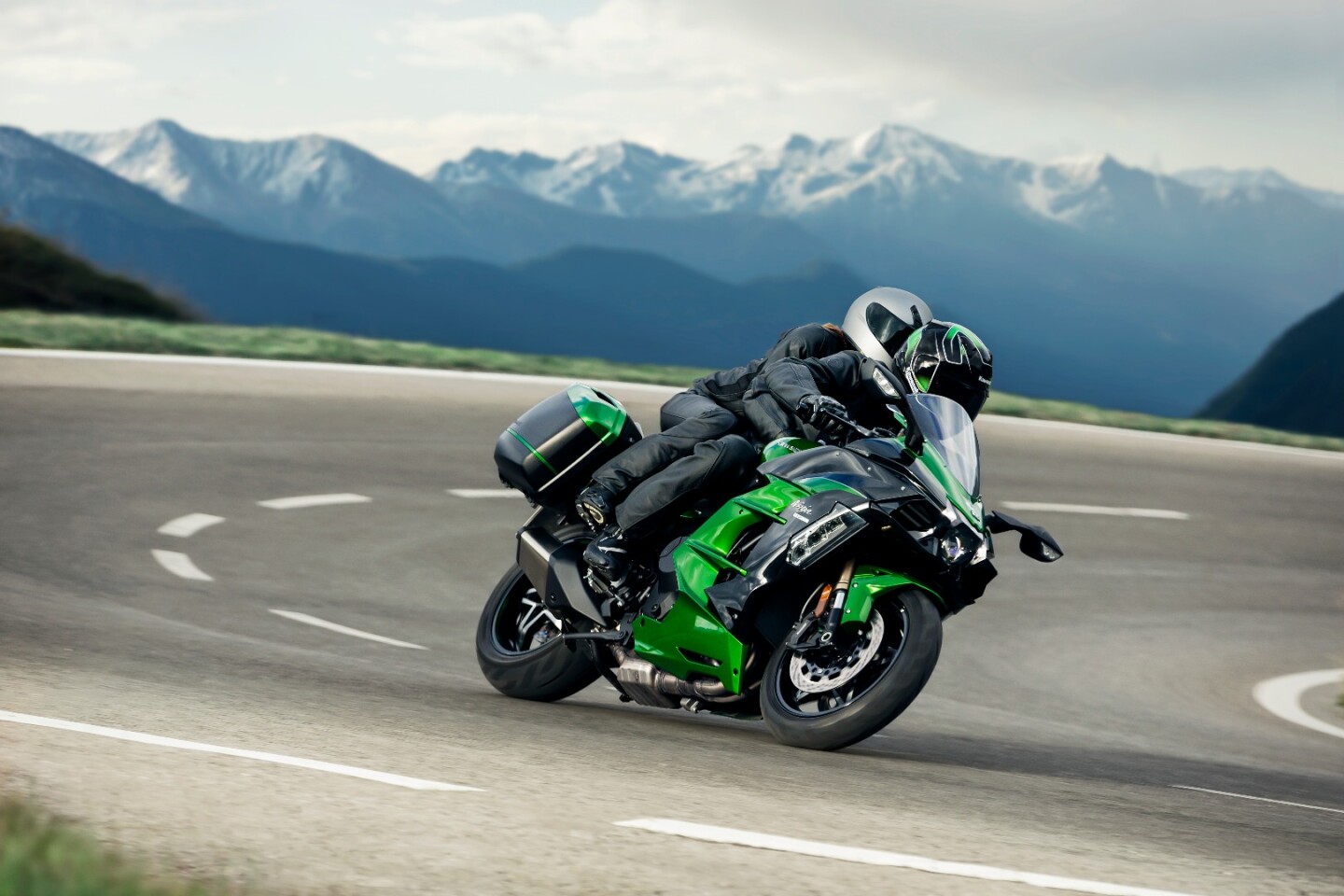If you thought that the supercharged H2 and H2R duo were a bit too much, at least they were sportbikes. How about a sport tourer version of the H2, complete with the supercharger and a stampede of 210 horses going two-up touring? Well, that's exactly what Kawasaki has unveiled at EICMA 2017 in the form of the Ninja H2 SX.
We knew it was coming, and yet the new Kawasaki did take many by surprise. The short teaser video of something carving its path along a twisty mountain road that was released about a month ago clearly linked a supercharger with the sound of a four-cylinder engine.
Judging from that video, it could have been a streetfighter, or perhaps a Versys-styled playbike taking the fight to Ducati's Hypermotard. Someone could even be forgiven for thinking that Kawasaki has decided to extend the supercharged concept to smaller engines. But no, it was the Ninja H2 SX.
To put it simply, Kawasaki has taken the road-legal H2, redesigned the engine enough to make it less hysterical and more practical, and thrown in an impressive collection of electronic and mechanical gear, all designed to change the way we see long distance hauling.

When we're talking about Kawasaki "redesigning" the engine, think of a new impeller and intake system for the supercharger, new pistons, cylinder head, cylinder, crankshaft, camshafts, throttle bodies, exhaust system, and revised gear ratios. At least it gets to keep the H2's slipper clutch.
From the outside, judging by capacity, cylinder dimensions and power output, it seems that nothing has changed. Yet the whole idea is to tune the 998 cc Balanced Supercharged Engine for low- and mid-level grunt, combined with fuel efficiency – all the while producing 200 hp (149 kW) at 11,000 rpm without ram-air, and 210 hp (157 kW) under its effect. The maximum torque of 137.3 Nm (101.3 lb-ft) is equally impressive, produced at 9,500 rpm.
According to Kawasaki, in this guise the four-cylinder powerplant excels at delivering fuel-efficient and relaxed low-speed rides on any road, from the city to the highway, but is still able to turn into a hooligan in a (supercharged) twist of the wrist.

The frame is also revised, offering a longer wheelbase for more open road stability and a wider, 30-degree steering angle to facilitate slow maneuvering. It is also strengthened enough to support a payload of 195 kg (430 lb), as any touring bike should.
The Ninja H2 SX rolls on fully adjustable suspensions that could easily hone any sport motorcycle, with inverted 43 mm forks and a new Uni-Trak monoshock at the rear. Stopping is handled by a pair of radially-mounted, four-piston calipers on 320 mm discs – typical stuff.
What's not typical, is the electronic arsenal employed by Kawasaki. Very few touring motorcycles can take pride in a Bosch six-axis inertial measurement unit (IMU) assisting the central electronic control of the motor in orchestrating a long list of supporting systems. Kawasaki simply calls it the Cornering Management Function (KCMF).
Starting with the absolute basics, the three-level selectable engine power modes range from full, to middle (75 percent of full), down to low (50 percent of full) output. The KCMF oversees the engine braking in two levels, Kawasaki's intelligent braking system (a.k.a. cornering ABS), the three-level adjustable traction control, the launch control, the electronic quickshifter and, finally, the only system that seems really fitting in a touring bike, the cruise control.
However, the above systems are not all part of the standard equipment. Kawasaki will offer the SX in two variants, with the more lavish SE having exclusive access to the launch control and quickshifter.

The Ninja H2 SX SE also features a very interesting set of cornering LED lights that are incorporated in the side fairings, its brakes sport steel-braided lines, and the instrument cluster includes a color TFT screen that can be configured in either touring or sport mode.
The basic dash has a negative display of the same size, but with an abundance of information that includes just about everything we can possibly think of and, on top, bank angle display and max bank angle recording (courtesy of the Bosch IMU), boost indicator, boost temperature (as in intake air temperature) and economical riding indicator.
The SE version also sports as standard a series of goodies that can be optionally fitted to the basic model, such as taller screen, 12 V DC socket, heated grips, center stand, tank pad, knee pads and wheel rim tape.

In all, the supercharged Ninja tips the scales wet at 256 kg (564 lb), and the SE at 260 kg (573 lb). These numbers see eye to eye with a sport touring competition that includes motorcycles like the Kawasaki ZZR1400 (or Ninja ZX-14), Suzuki Hayabusa and Yamaha FJR1300 – but only the H2 SX has a supercharger.
In a world where fuel efficiency is gradually shifting from a nice attribute to a critical requirement, forced induction systems are expected to make a comeback. Rumors have it that Suzuki is planning a turbo kit for mid-sized engines and Kawasaki will expand supercharging towards lower capacities – i.e. in classes that fetch big sales numbers.
In this sense, it seems rather logical that Kawasaki introduced the H2 SX now. The H2 and H2R were primarily destined for headlines and impressions, but the SX introduces a real-world component to the game. Appealing to the everyday rider was the next logical step, before replicating this tactic to more affordable bikes. In the meantime, Kawasaki already had the head start when the 300+ hp H2R became the talk of the town, and is now just extending it.
Source: Kawasaki




























